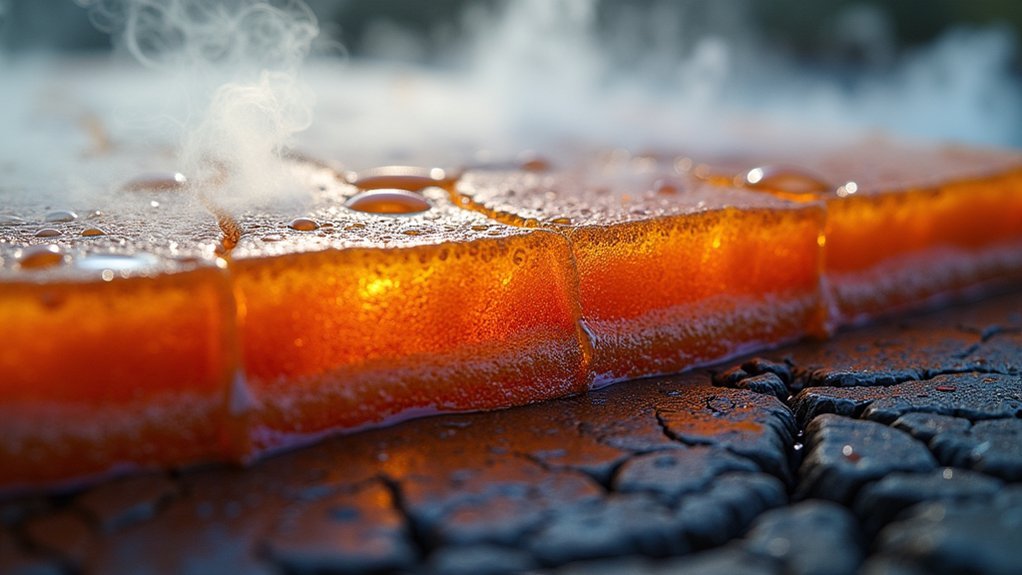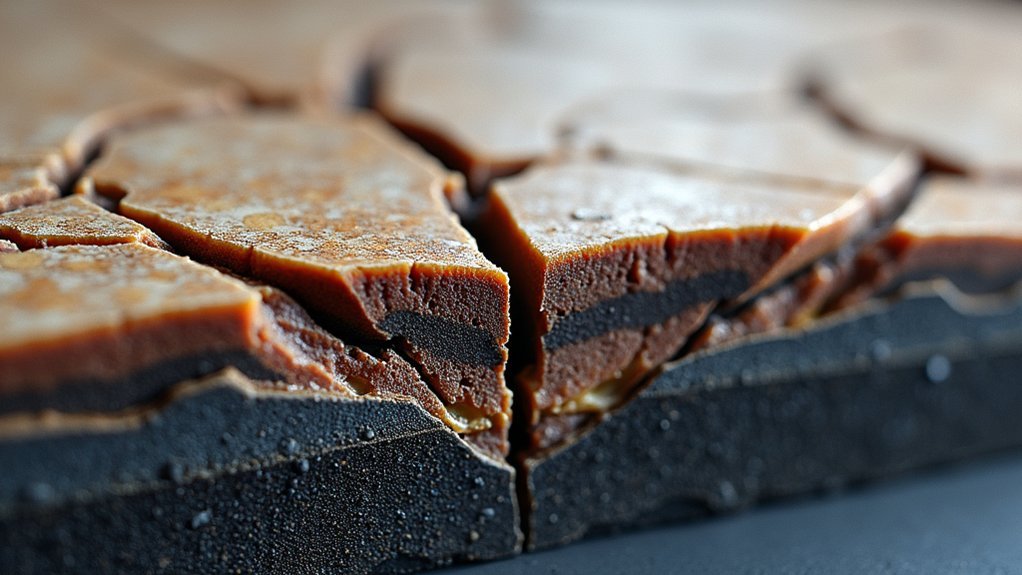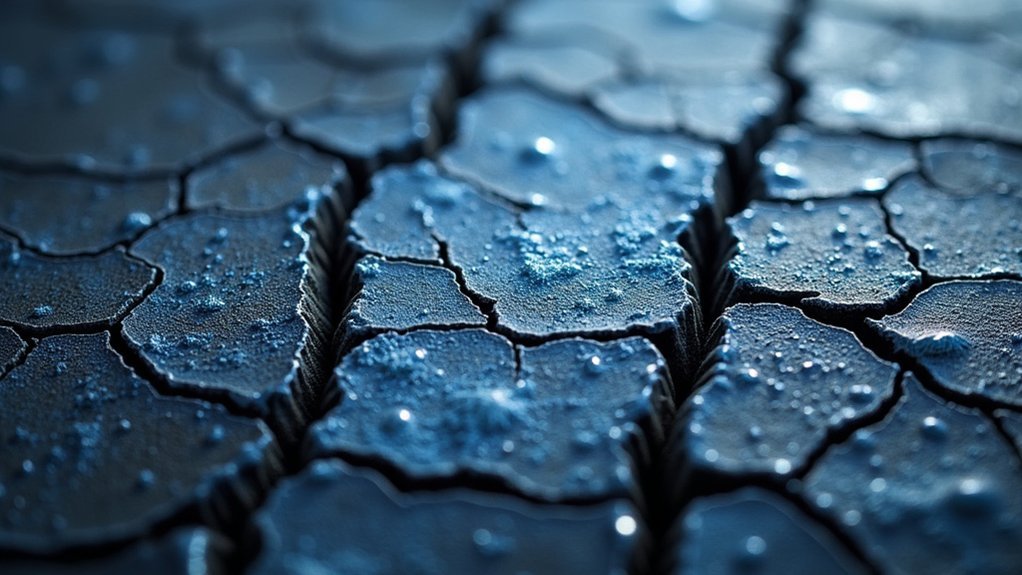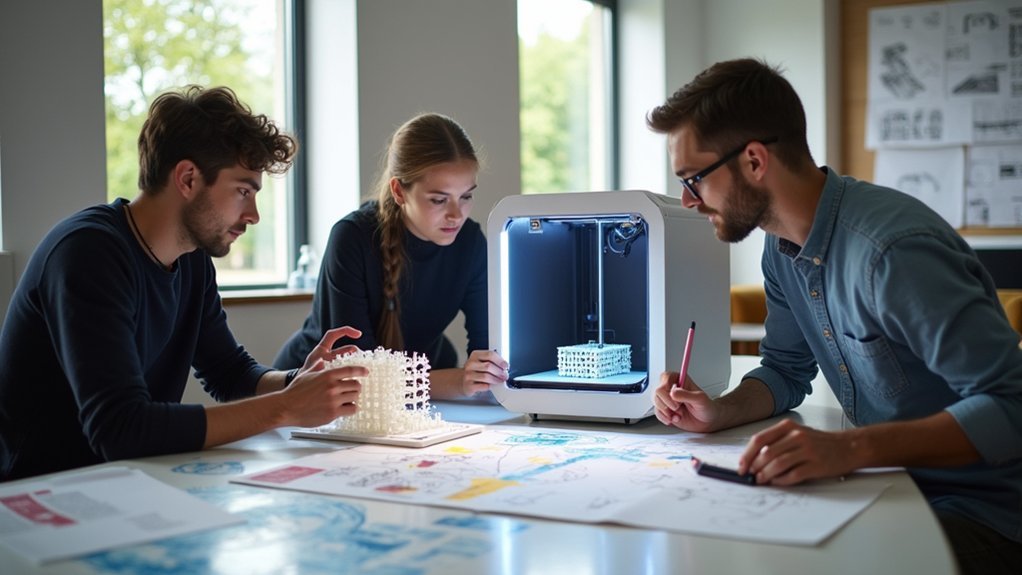Draft cooling weakens your 3D print’s layer bonds in three critical ways. First, rapid temperature fluctuations create thermal stress as upper sections contract faster than lower ones, reducing adhesion strength by up to 30%. Second, excessive airflow solidifies filament prematurely, preventing proper fusion between layers. Third, uneven cooling patterns cause outer layers to harden while inner sections remain hot, leading to warping and layer separation that compromises your print’s structural integrity throughout the process.
Rapid Temperature Fluctuations Create Thermal Stress Between Layers

When your 3D printer’s cooling fan kicks into high gear immediately after extruding a layer, it creates a temperature imbalance that can sabotage your print’s structural integrity.
These rapid temperature fluctuations generate thermal stress between layers, causing upper sections to contract faster than lower ones. This differential cooling severely compromises layer bonding, resulting in poor adhesion that weakens your entire print.
The printing process becomes vulnerable when you don’t maintain a stable environment. Temperature fluctuations can reduce interlayer adhesion strength by up to 30%, making delamination more likely.
Your prints need ideal cooling strategies that allow gradual temperature reduction rather than immediate blast cooling. Strong adhesion is essential for durable prints, so you’ll want to avoid drafts and sudden air temperature changes that exacerbate thermal stress on newly extruded layers.
Excessive Airflow Prevents Proper Filament Fusion During Extrusion
As excessive airflow from your cooling fans hits freshly extruded filament, it forces the material to solidify before layers can properly fuse together. This rapid cooling creates structural weaknesses throughout your print by preventing adequate layer bonding.
When outer layers harden before inner material achieves proper filament fusion, you’ll experience poor layer adhesion and potential delamination.
Temperature-sensitive materials like PLA require careful airflow management during initial layers. A balanced cooling strategy involves gradually increasing fan speeds after the first few layers, allowing sufficient fusion time before solidification occurs.
Gradual fan speed increases during initial layers prevent premature cooling and ensure proper filament fusion for stronger prints.
- Reduce cooling fan speeds for first 3-5 layers to improve bonding
- Adjust ideal cooling settings based on specific material requirements
- Monitor layer adhesion quality during printing process
- Avoid excessive airflow on materials prone to warping like ABS
- Implement gradual cooling increases rather than sudden changes
Uneven Cooling Patterns Lead to Warping and Layer Separation

Beyond simple layer adhesion issues, draft cooling creates uneven temperature distribution that triggers warping and layer separation throughout your print. When drafts hit your model, outer layers cool rapidly while inner sections remain hot, generating internal stresses that compromise structural integrity. This differential cooling particularly affects temperature-sensitive materials like ABS, causing visible deformation and poor layer adhesion.
| Cooling Pattern | Effect on Print | Solution |
|---|---|---|
| Even cooling | Strong bonds, minimal warping | Controlled environment |
| Draft exposure | Warped corners, layer separation | Use enclosures |
| Rapid cooling | Internal stresses, cracking | Maintain ambient temperature |
| Inconsistent airflow | Surface defects, weak adhesion | Eliminate air currents |
| Temperature fluctuations | Delamination, failed prints | Stable printing conditions |
Maintaining consistent ambient temperature and using enclosures effectively prevents these cooling-related failures.
Frequently Asked Questions
What Causes Poor Layer Adhesion in 3D Printing?
You’ll experience poor layer adhesion when you’re printing too fast, using inadequate temperatures, or dealing with excessive cooling. Low-quality filament and environmental factors like drafts also weaken bonds.
What Temperature Is Good for PLA Layer Adhesion?
You’ll get ideal PLA layer adhesion by setting your nozzle temperature between 200°C and 220°C. Use a heated bed at 50-60°C and perform temperature tower tests to find your filament’s perfect setting.
How to Get Better Layer Adhesion With PETG?
You’ll improve PETG layer adhesion by setting your nozzle to 220-250°C, heated bed to 50-80°C, reducing part cooling fan speed, printing at 40-60 mm/s, and using 0.2-0.3mm layer heights.
Why Does My 3D Print Keep Shifting Layers?
Your 3D print shifts layers because excessive cooling from high fan speeds or room drafts causes uneven temperature changes, creating thermal stress that weakens layer bonds and leads to separation.





Leave a Reply